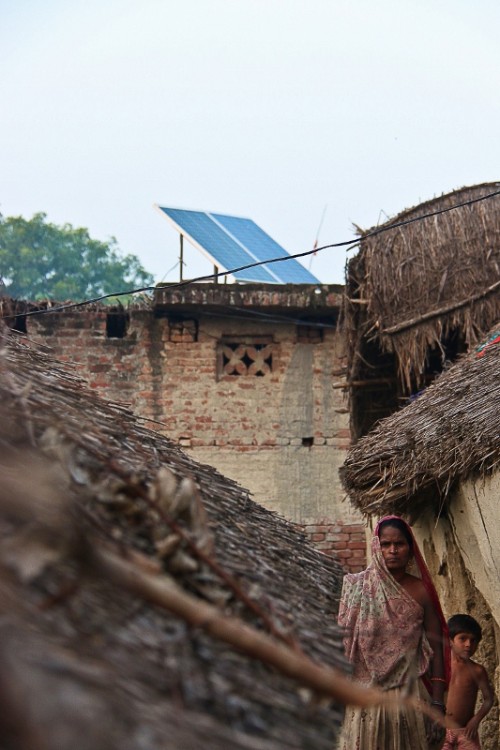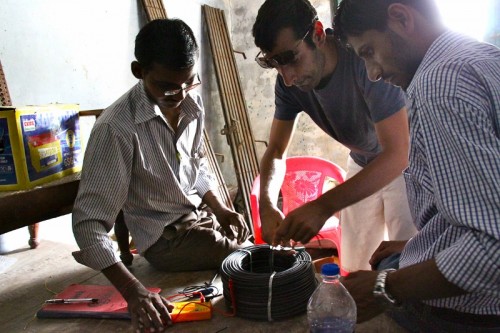TBI Photo Essay: Mera Gao Power – Providing A Brighter Future, Two Solar Panels At A Time
As a social enterprise committed to providing some of the poorest households in India with solar power, Mera Gao Power is making great inroads. Starting from Sitapur district in Uttar Pradesh, the venture has reached out to more than 3500 customers in just over a year. In this lovely photo essay, Anna Da Costa shows us some of the impact when people living off the grid are finally included in the growth story and shown the possibilities.

As a social enterprise committed to providing some of the poorest households in India with solar power, Mera Gao Power is making great inroads. Starting from Sitapur district in Uttar Pradesh, the venture has reached out to more than 3500 customers in just over a year. In this lovely photo essay, Anna Da Costa observes some of the impact that can be seen when people living off the grid are finally included in the growth story and shown the possibilities.

The fading light begins to slope and redden as evening approaches in Sitapur district, north-central Uttar Pradesh. As you journey here from the bustling city of Lucknow, you travel not only across space but time, too, into a medieval world of smoking wood fires, trundling bullock carts and mud-walled, straw-topped huts. Scantily clad children herd buffalos in from pasture, riding atop them like tiny warriors. There is little electricity here, and access to clean water or basic sanitation is almost absent too. The summers are scorching and the winters frigid yet at this time of year, just after the rains, a cool breeze tousles the teeming grasses blissfully. Even this heavenly vision, though, veils the challenges that were brought to the region by heavy monsoon rains this season, which swelled the Ghaghara river’s banks to bursting point, inundating more than seventy villages in the area and multiple croplands.

UP is one of India’s largest, most populated states, within which 63 percent of households (125 million people) are without power. In many areas no grid exists at all, and in those where it does, power is sporadic. In Sitapur, one such pocket of absence, a small social enterprise called Mera Gao Power (MGP) is trying to change things, two solar panels at a time.
Village by village, they are building a network of low cost solar microgrids that provide two LED lights and a mobile charging point to all paying households at a cost of Rs. 25 per week. That’s lower than the equivalent kerosene and mobile charging costs from the nearest town, which can be almost double when totaled across the month¹. Being a “smokeless” source of light it comes with added benefits to customer health, too.

Installing a microgrid is a grand event in the village and everyone gets involved. Here in the village of Damdampurawa, the team maps the village house by house beneath the scorching mid-day sun, working out where to place each wire so as to connect customers to the power source. Some householders joined in while others looked on, smoking a chillum, calling out orders, or watching the curious proceedings wide-eyed.
Being an energy service company, MGP maintains responsibility for these grids after they are installed. The only price the customers pay is for the connection and the energy itself, which they are provided with for seven hours each night. “This is an essential part of our model”, says Sandeep Pandey, their operations manager. “It’s designed not to place high price burdens on our customers, who are amongst India’s poorest”.

Before any equipment is installed, it is vital that it is tested. Poor quality materials can flaw a grid from the start and have proved a problem for the company in the past. Here, Sandeep, Nikhil and Raj Kamal, three members of the MGP team, test the wires that they plan to lay in the village of Damdampurawa to make sure they are working well.
If you found our stories insightful, informative, or even just enjoyable, we invite you to consider making a voluntary payment to support the work we do at The Better India. Your contribution helps us continue producing quality content that educates, inspires, and drives positive change.
Choose one of the payment options below for your contribution-
By paying for the stories you value, you directly contribute to sustaining our efforts focused on making a difference in the world. Together, let’s ensure that impactful stories continue to be told and shared, enriching lives and communities alike.
Thank you for your support. Here are some frequently asked questions you might find helpful to know why you are contributing?


This story made me
-
97
-
121
-
89
-
167











